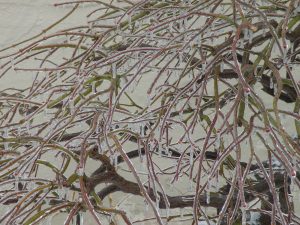
Ice-covered Acer palmatum
In spite of the fact that our weather is so unstable right now, it’s not too soon to be thinking about which perennials or grasses would fill bare or problematic spaces.
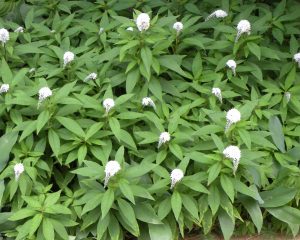
Lysimachia clethroides
Remember that old cliché, “Right plant, right place”? It is incredibly apt when it comes to the use of perennials that are rhizomatous. Love some, hate others. For instance, I love the arching necks of Lysimachia clethroides (Gooseneck) with their pyramidal white blooms in June and July. It will grow two feet tall. Given moisture and full sun to partial shade, it will happily cover the ground for you. Put it in dry soil or in soil where it is competing with tree roots and it won’t move.
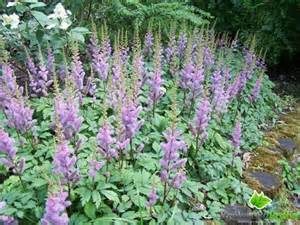
Astilbe chinensis ‘Pumila’
No one thinks of Astilbe chinensis as a thug but it loves to spread, especially in partial shade and lots of moisture although it is somewhat drought tolerant. For me, that’s a good thing. I love its fluffy plumes and divided foliage. There are so many cultivars from which to choose, both color and height. ‘Pumila’ is an old lavender dwarf at twelve inches but ‘Maggie Daley’ is rosy pink and will grow two feet tall. The Vision series vary in color from white to raspberry pink to pale pink and in height from fifteen inches to twenty-four inches.
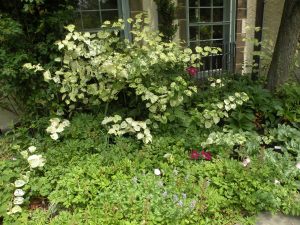
Fallopia japonica ‘Variegata’
Behind my Astilbe is Fallopia japonica ‘Variegata’. Without pruning to shorten it and make it bushy, it will easily reach six or seven feet. I like to keep mine as a four feet background for some roses and the Astilbe. In partial shade, it will be cream, white, and green. In full sun, the cream will be white. The new foliage is a beautiful coral and it doesn’t display its showy white sprays until September. In spite of these assets, you must be careful where you site it because it does love to run, even into the expansion joints between stone walks.

Geranium cantabrigiense ‘Biokovo Karmina’
Geranium cantabrigiense, either ‘Biokovo’ or ‘Biokovo Karmina’, have small-lobed leaves that form a tight mat; they become tinged with red in the fall and stay that way during the winter. In May and June, its six-inch-high flowers are pale pink or bright pink. While it will spread, the spread is so gradual that it is easy to cut down to size, if so desired.

Liriope spicata-bloomindesigns.com
I’m sure you are familiar with Liriope muscari, a grass-like perennial with, usually dark blue or purple flowers in late summer. This is a short clumper for shade but its cousin, Liriope spicata is a runner and could be used as a shady lawn substitute. I found it to be the only perennial that would survive at the base of an old hawthorn. When the hawthorn was toppled in a snowstorm, I no longer needed the Liriope but it had definitely filled a niche.
I planted Aster macrophyllus for its large leaves and daisy-like flowers but I find the flowers disappointing and have discovered that this aster has been trying to take over. Thus, I find myself gradually getting rid of it, believing that it is not worthy of my limited space.
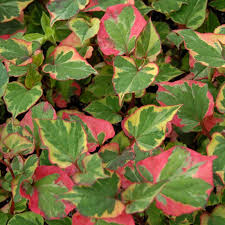
Houttynia cordata
The bright, multi-colored foliage of Houttynia cordata (Chameleon Plant) is seductive but I urge you to resist. It would take over the world if given half a chance and will definitely eat your garden. Even worse, when you decide to dig it up, you will need an oxygen mask because the roots stink to high heaven.
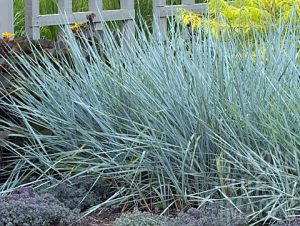
Leymus arenarius ‘Blue Dune’ – bakerenvironmental nursery
Hot, sunny, dry sites are always challenging and you might be tempted to plant Leymus arenarius (Blue Lyme Grass) but take care in siting it. This rampant runner needs some type of containment (such as a concrete sidewalk or a wall) from the very beginning. It is lovely on a hillside and is great for erosion control. The foliage is two feet high and the wheat-like blooms are held another foot above the foliage.
When considering whether to plant a runner, ask yourself how much space you want it to cover and whether you will be willing to spend future time maintaining it to keep it in check. Runners are friends or foes depending on their aggressiveness and the place in which you plant it.


0 Comments